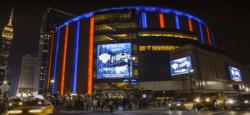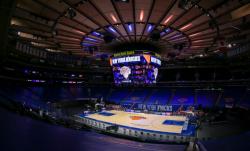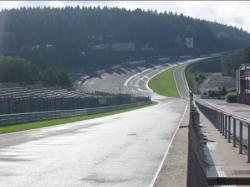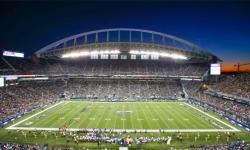Best Soccer Stadiums in the World and their History
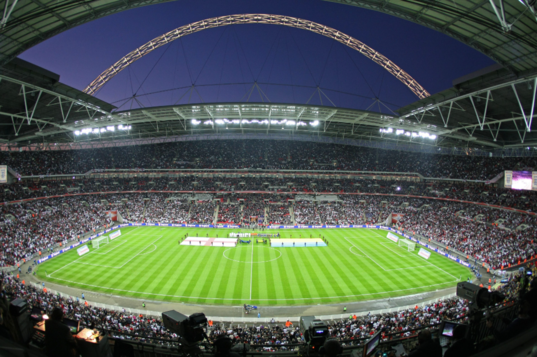
Best Soccer Stadiums in the World and their History
Rungrado Stadium: 1989
Rungrado 1st of May Stadium is a multi-purpose stadium on Rungra Island Pyongyang North Korea. It opened on May 1 of 1989 its first major event was the 13th World Festival of Youth and Students. It is the second largest stadium in the world by capacity after India's Narendra Modi Stadium based on its reassessed seating capacity in 2014 and the second largest stadium in that world arena is based on its official seating capacity.
Camp Nou: 1957
Camp Nou has announced that streaming service Spotify has reached an agreement with FC Barcelona to acquire the stadium naming rights for US$310 million. Following the approval of the sponsorship deal with Spotify by FC Barcelonas Extraordinary Delegates Assembly on April 3, 2022 at the stadium was officially renamed Spotify Camp Nou on July 1, 2022.
FNB Stadium: 2009
Right next to the African Football Association (SAFA House) which housed both the FIFA offices and the Local Organizing Committee for the 2010 FIFA World Cup. The FNB Stadium which was designed to be the main football stadium of the World Cup has grown to become the largest stadium in Africa with a capacity of 94,736. However the maximum capacity during the 2010 FIFA World Cup was 84,490 as seats were reserved for the press and other VIPs. The stadium is also known by the nickname Kakwa due to its sameness to a budvase of Africa or gourd.
Rose Bowl: 1922
One of the most famous sports venues in history the Rose Bowl is best known as a college football stadium most notably as the site of the annual Rose Bowl game for which it is named. It has been the home stadium of the UCLA Bruins football team on the era of 1982. Five Super Bowl games have been played at the stadium making it the third largest stadium. The Rose Bowl is a major soccer venue having hosted the 1994 FIFA World Cup Final the 1999 FIFA Women's World Cup Final and the 1984 Olympic Soccer Gold Medal Game, as well as numerous CONCACAF and USA soccer matches.
Wembley Stadium: 2007
As well as home games against England and the FA Cup Final, the stadium also hosts other major English football matches including FA Community Shield FA Cup Final League FA Cup Semi Finals The Football League Trophy Football Liga Play Off FA Trophy FA Vase and National League Play Off. A UEFA Tier 4 stadium Wembley hosted the 2011 and 2013 UEFA Champions League finals, eight UEFA Euro 2020 matches including the final and two semifinals and hosted the UEFA Euro 2022 European Women's Championship final. Best Soccer Stadiums in the World and their History.
Lusail Stadium: 2021
Lusail Stadium also known informally as the Lusail Iconic Stadium is a football stadium in Lusail Qatar. Owned by the Football Federation of Qatar it is the largest stadium in Qatar and the Middle East by capacity and one of eight stadiums built for the 2022 FIFA World Cup which hosted the 2022 Argentina France final and is the fourth largest stadium in Asia but will reduce its current capacity from 88,966 to 40,000 in the near future.
Bukit Jalil National Stadium: 1998
It was officially opened from four Prime Minister of Malaysia Tun is Dr. Mahathir Mohamad on July 11 1998 before the 1998 Commonwealth Games where the opening ceremony was held. Since then it has also been the premier venue for other international multi-sport events such as the 2001 Southeast Asian Games and the 2017 Southeast Asian Games and today hosts most of Malaysia's international football matches finals of top-level football competitions such as the Malaysia Cup athletics events and music concerts.
Borg El Arab Stadium: 2009
The stadium is air-conditioned. There are 2 training sub-stadiums, each with a capacity of 2,000 spectators, including 2 dressing rooms and an athletics stadium. The stadium also has a hotel for 200 people. The stadium has a building with 300 presses. The main cabin is protected by a parasol covering 35 percent of the stadiums total area. It is located on the Desert Highway Cairo-Alexandria 10 km from Borg El Arab Airport and 15 km from downtown Alexandria. A running track runs around the pitch and there are four floodlights on the pitch. A single grandstand is covered.
Vivekananda Yuba Bharati Krirangan: 1984
The record attendance at the stadium was set in 1997 when 131,781 addressees watched the Federation Cup semi-final match between East Bengal and Mohun Bagan. In preparation for hosting the 2017 U17 World Cup, the stadium was converted back to natural grass with artificial turf. The new turf was unveiled for the Kolkata derby match between East Bengal and Mohun Bagan in the 2015 to 16 Calcutta Premier Division game.
Stadium Australia: 1999
The stadium was originally built to hold around 115,000 spectators, making it the largest Olympic stadium ever and the second largest stadium in Australia after the Melbourne Cricket Ground which held over 120,000 spectators before being remodeled in the early of two thousand Remodeling work has been completed to shorten the north and south wings and install moveable seats. These changes reduced capacity to 80,000, with seating able to be added based on seating configurations. Awnings were also installed on the north and south stands, leaving most of the seating protected. The stadium was designed according to the principles of sustainable development for example, the use of less steel in the roof structure than the Olympic stadiums in Athens and Beijing.



_thumb.jpg)
_thumb.png)







